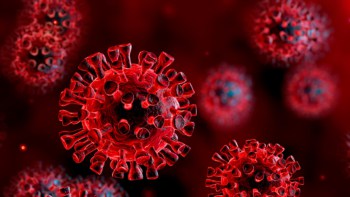
In a proof-of-concept study, researchers at the National Institute of Standards and Technology (NIST) used a smartphone’s built-in magnetometer, combined with hydrogels that change their shape in response to specific cues, to measure sugar concentrations in beverages. The platform, they say, could potentially be used to measure glucose in biological samples, detect environmental toxins, or even test the pH of liquids in an at-home brewery.
That a smartphone can be used as a compass is thanks to its magnetometer, which measures the Earth’s magnetic field (or a local source of magnetism) in three directions. Postdoctoral researcher Mark Ferris and project leader Gary Zabow, both of whom work in the Applied Physics Division at NIST, decided to employ smartphone magnetometers to measure chemical constituents in samples.
“We’re trying to make a new sensing platform, and in particular, trying to make something that is very accessible to a lot of people. And so we have been using a cell phone, which most people have already, as the basis of the sensor platform,” says Zabow.
“We think [the sensing platform is] a good complement to optical smartphone devices that are already out there that may have a little more issue getting around autofluorescence, scattering and so on in murky samples…That’s where, in general, magnetics does better,” Ferris adds.
The magnetics-based sensing platform hinges on hydrogels – materials that swell when immersed in water – that are embedded with tiny magnetic particles. The hydrogels react to the presence of different chemical constituents of a sample, such as glucose, or to changing pH levels.
The platform works by clamping to a smartphone a small well containing a few millilitres of test solution and a strip of hydrogel. As the hydrogels enlarge or shrink, they move the magnetic particles closer to or father from the magnetometer, which detects and measures corresponding changes in the strength of the magnetic field.
The researchers opted to use a stack of hydrogels to amplify particle motion, making it easier to measure changes in magnetic field strength.
“Magnetics lends itself to being directly quantitative,” Zabow says. “It’s a number that you measure, the strength of the magnetic field. It’s not a picture that you need to convert into something that’s quantitative.”
So far, the researchers have demonstrated proof-of-concept in the sensing platform using control test samples, including wine and champagne. They observed that a high-sugar wine (sangria) induced a bigger change in magnetic field than low-sugar options (pinot grigio and champagne brut). Glucose concentrations were measured at high sensitivities, as small as a few millionths of a mole per litre.
The sensing platform is inexpensive and relatively easy to build and could be used in locations with relatively few resources.

Smartphone camera could enable at-home monitoring of blood-oxygen levels
The researchers’ next steps will be to improve platform sensitivity and specificity, which can be addressed by altering the hydrogel chemistry or by incorporating hydrogels that are sensitive to different analytes.
“There are some steps that need to be taken first, in terms of specificity of the tests to ensure that when you’re measuring glucose or pH – those are the two examples in the paper – there’s no interference, you’re not getting some other inadvertent contribution from something else in the solution. That’s a question of specificity of the hydrogel test strips, and that’s something that we still have to work on,” Zabow says.
This study is published in Nature Communications.



